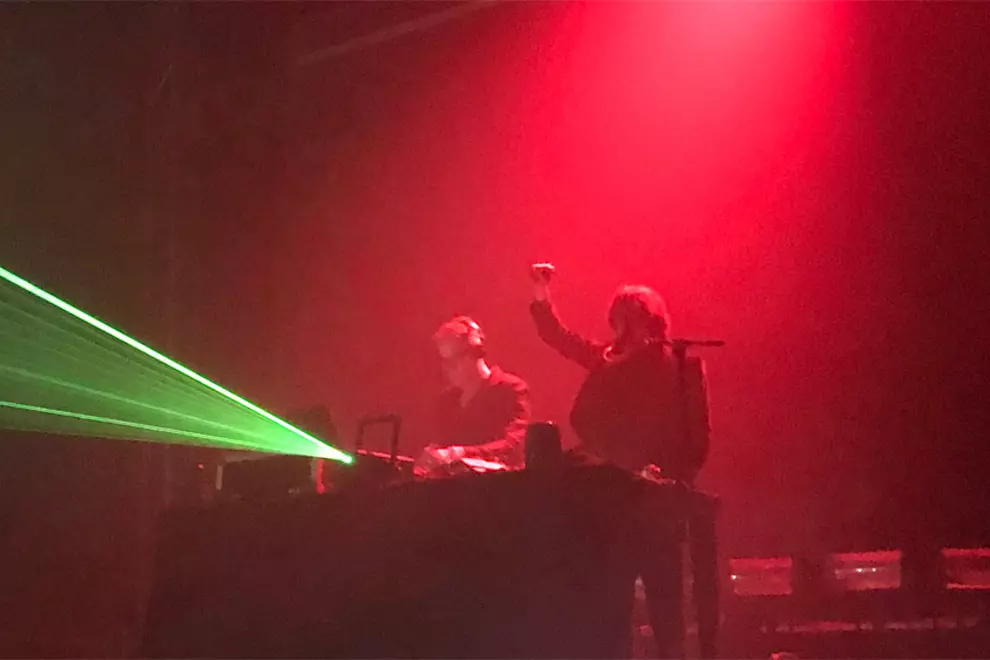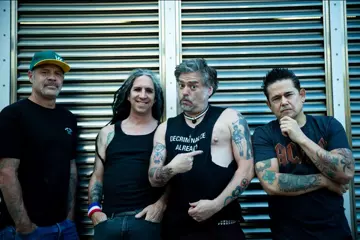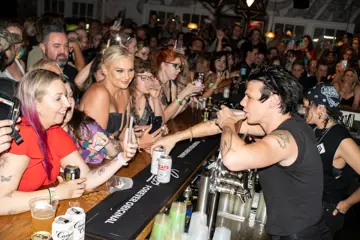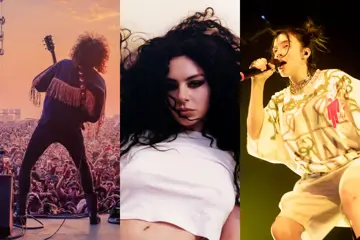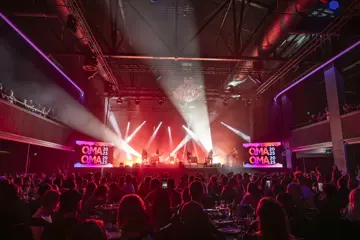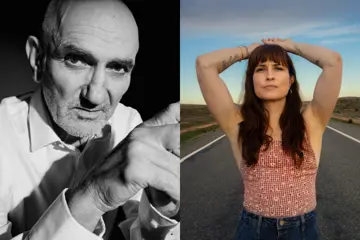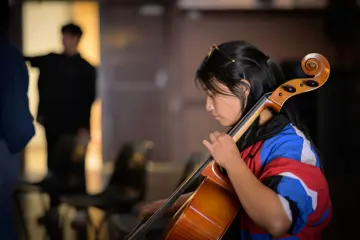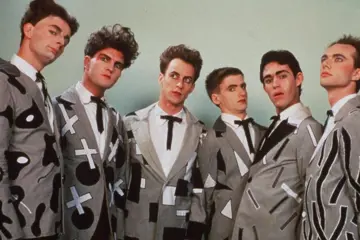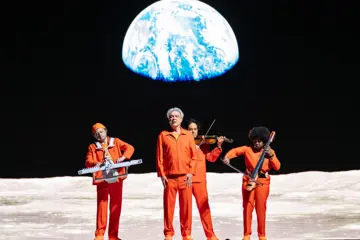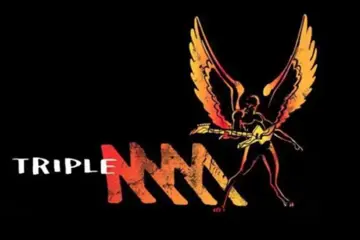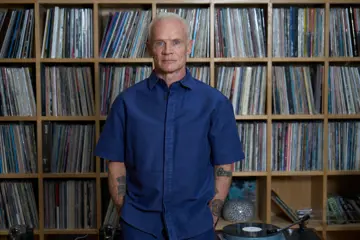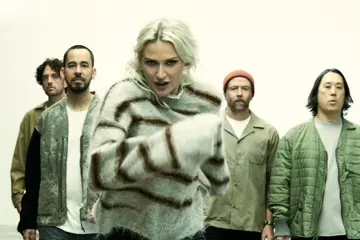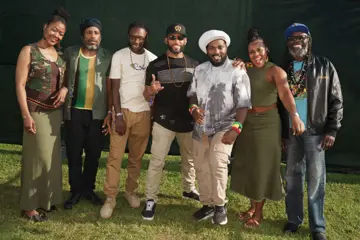After queuing for over an hour at the Primavera Sound info tent to secure wristbands for Steve Mackey and Jarvis Cocker's Dancefloor Meditations, we must then wait four more hours before our souls are elevated.
Heineken Hidden Stage opens half-an-hour before showtime (as long as you have a map, it's relatively easy to locate) and we score front row. There's some windchime-y beats playing out while we wait and Cocker's soothing timbre counts us down to Dancefloor Meditations in two languages: English then Spanglish (e.g. "Dancefloor Meditations will start in cinco minutes").
A roar goes up as the pair finally wander out and take their positions behind the console. Cocker suggests we all sit on the floor since the beginning of Dancefloor Meditations is performed in darkness. We're then introduced to our 'mantra': bass throbs supplied by Mackey. Our backs against the barrier and with eyes closed, we focus on the vibrations as Cocker shares some facts about the 808 drum machine and how this invention opened up compositional possibilities. As Marvine Gaye's Sexual Healing enters the mix, we're coaxed back to our feet for some grinding.
During Part One of Dancefloor Meditations, Cocker explains the music of the so-called Roaring '20s was totally devoid of bass as Mackey plays a couple of pieces of Charleston music by way of example. We're then told Steely Dan were the first band to utilise subwoofers during the mixing of Pretzel Logic (1974). A snippet of audio from a Phil Oakey interview sees The Human League founder explaining how falling asleep to the distant thrum of machinery in Sheffield, where he grew up, formed songs in his head that inspired his band's industrial sound. One of The Human League's early tracks is then dropped to illustrate Oakey's point and sounds earth-shattering in this context (although the use of strobes is often too intense for this scribe, which leads to many more eyes-closed moments). The next sonic exhibit comes courtesy of Orbital and lasers perfectly punctuate the beats. Some of Cocker's daggy gags bring the LOLs and it's all very edutaining.

After a short intermission, Part Two is a history lesson on the discotheque via The Swing Kids of Hamburg who played "degenerate music" as loudly as possible in their basements. We're instructed to close our eyes once more and listen carefully to Cocker's dulcet tones. When it's time to open our eyes, a ginormous mirrorball has been illuminated to signal full disco mode and speckles of light dance around the room. The crowd reaction is immense, as if we've never clapped eyes on this lighting effect before.
Cocker then explains our very own Bee Gees developed the disco beat by putting electrodes on their keyboard player's heart and connecting this pulse through to the control room. Their drummer then played along to the heartbeat, a drum loop was created and voila! Dancefloor Meditations deal Stayin' Alive as an example of 'the perfect beat' and it has to be said this song is an absolute joy to dance to. As Mackey mixes more choice selections, Cocker wanders through the crowd and climbs onto a raised podium to dance with the throng. Punters scramble for their smartphones to record the action while dancing with the Pulp frontman.
Dancefloor Meditations is a must-see for music fans, presenting fascinating facts alongside iconic dance tracks. Cocker and Mackey truly shine in this mirror-ball light.

